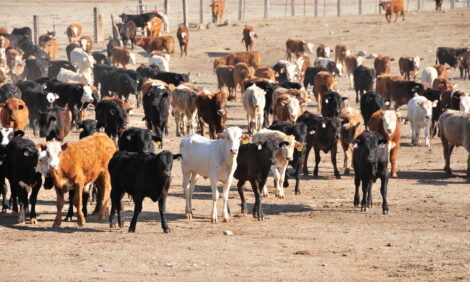



New Zealand Sees Improved Cattle Returns
NEW ZEALAND - Dry conditions in the northern North Island and continued land use change in the South Island saw New Zealand’s sheep numbers decrease 3.2 per cent over the 2013-14 season, while beef cattle numbers increased 1.6 per cent.Beef + Lamb New Zealand’s (B+LNZ) Economic Service carries out a stock number survey annually. Its latest survey shows sheep numbers dropped to 29.8 million in the year to 30 June 2014.
B+LNZ Economic Service Chief Economist Andrew Burtt said strong mutton prices, driven by rising demand from North Asia, encouraged a high level of cull ewe processing for the second year in a row.
Breeding ewe numbers, at 19.96 million, were slightly down (-1.4 per cent) on the previous June. The largest contributor to the overall decline was the South Island, reflecting the continued land use trend towards dairy and dairy support activities.
Ewe condition and feed supplies were positive at the 2014 mating, except in Northland and northern parts of the Waikato, where farmers experienced a second year of dry conditions. On average across the country, scanning results are estimated to be higher than in 2013.
Mr Burtt said that, given the favourable climatic conditions and overall adequate feed supplies, the national average ewe lambing percentage is forecast to lift by about 1.5 percentage points from 120.9 per cent in 2013.
“With 20 million breeding ewes, each one percentage point change in lambing percentage equates to 200,000 lambs. However, spring lambing conditions will be a key factor determining the final lamb crop.”
For the first time since 2006-07, beef cattle numbers increased – to 3.76 million – reflecting good feed conditions and improved returns, which led farmers to hold on to older cattle.
“Breeding cows were in good condition at mating. With favourable feed supplies over the winter, and assuming good feed supplies continue into spring, the calving percentage is expected to be similar to last year,” Mr Burtt said.
“The only exceptions are Northland and northern parts of the Waikato, where tight feed conditions in spring 2014 might impact on calf survival at calving.”
The Economic Service estimates the dairy herd increased 0.7 per cent in the year to 30 June 2014, reflecting increasing numbers in the South Island (+2.6 per cent), offset by a slight decline in the North Island (-0.5 per cent).
TheCattleSite News Desk


